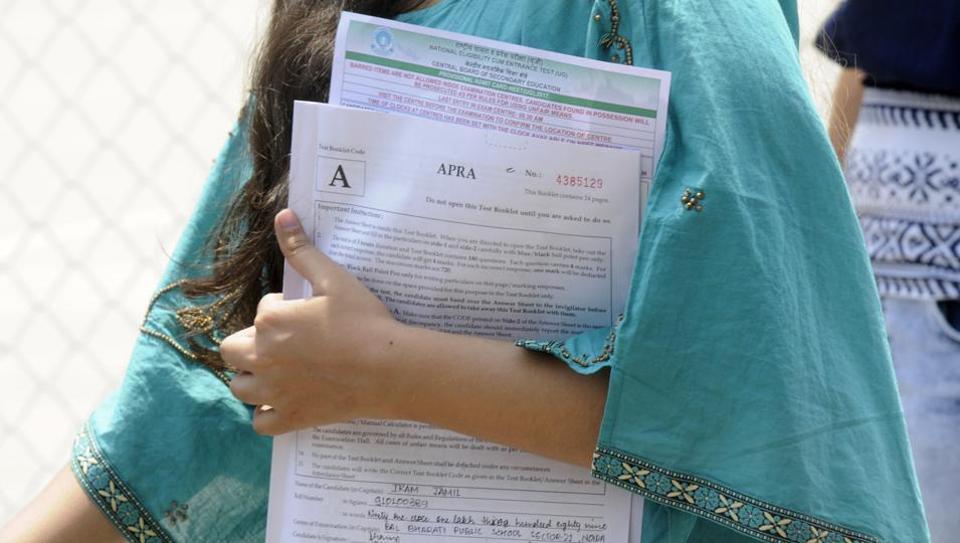
Medical college entrance exam NEET UG 2017 was conducted by the Central Board of Secondary Education (CBSE) in 10 different languages, compared to eight last year, on Sunday.
Students attempted the test in English, Hindi, Tamil, Telugu, Marathi, Bengali Assamese, Gujarati, Oriya and Kannada. The last two languages were added this year.
There were 180 questions to be answered, with a total of 720 marks. This included 45 questions from physics and chemistry and 90 questions from biology. Each question was of objective type with four choices.
According to Aakash Chaudhry, director, Aakash Educational Services Pvt Ltd,the pattern of NEET-2017 was same as that of last year. There were a total of 180 questions; each question carrying four marks with one negative mark for wrongly answered questions.
In physics, overall questions were above average, with a mix of easy, moderate and difficult questions. It had almost 50% questions which required calculations – thus, more time investment by students. Overall, the paper was time-consuming due to fractional calculations. Roughly, 30% questions were theoretical. Most of the questions had two or more concepts interlinked and were not straightforward.
The chemistry questions were above average. Nearly 30% questions were difficult and required strong conceptual clarity. One question had ambiguity while two questions were found beyond the scope of NCERT.
The biology portion of NEET 2017 included mostly average type of questions, most of them based on NCERT text books. Candidates who have been thorough with NCERT textbooks would have definitely done well. A few questions required analytical ability. Overall, the biology questions were on the expected lines.
NEET-2017 question paper was different in some regions, especially the codes, which had questions in Gujarati and Bengali language. The Gujarati language question paper can be deemed relatively easier if we compare it with paper codes which had questions in English and Hindi languages.
Highlights of NEET 2017:
• Most of the questions were based on concepts given in NCERT. One can conclude that 60-70% of the complete paper was a clear reflection of NCERT.
• Overall, questions involved different level of skills – some being knowledge-based and others being of the analytical type. Questions in physics required knowledge of different concepts and thus were time consuming. However, there weren’t too many questions based upon diagrams this time.
• One has to agree, a change in trend was witnessed this year as the bar of difficulty level was definitely higher since questions required exceptional calculation skills. While in biology, a major fraction of questions were from Class 11, but in physics and chemistry, questions from both class 11 and 12 syllabus were asked.
• CBSE continued with its tradition of 7% ambiguous questions.
• Many options that in questions, particularly in biology, were beyond the NCERT textbook information. This comes as a warning to future NEET aspirants, who might need to include some extra reading to prepare for the exam next year. This year, clearly, more emphasis was laid on application-based questions in all the three subjects.
[“source-hindustantimes”]

